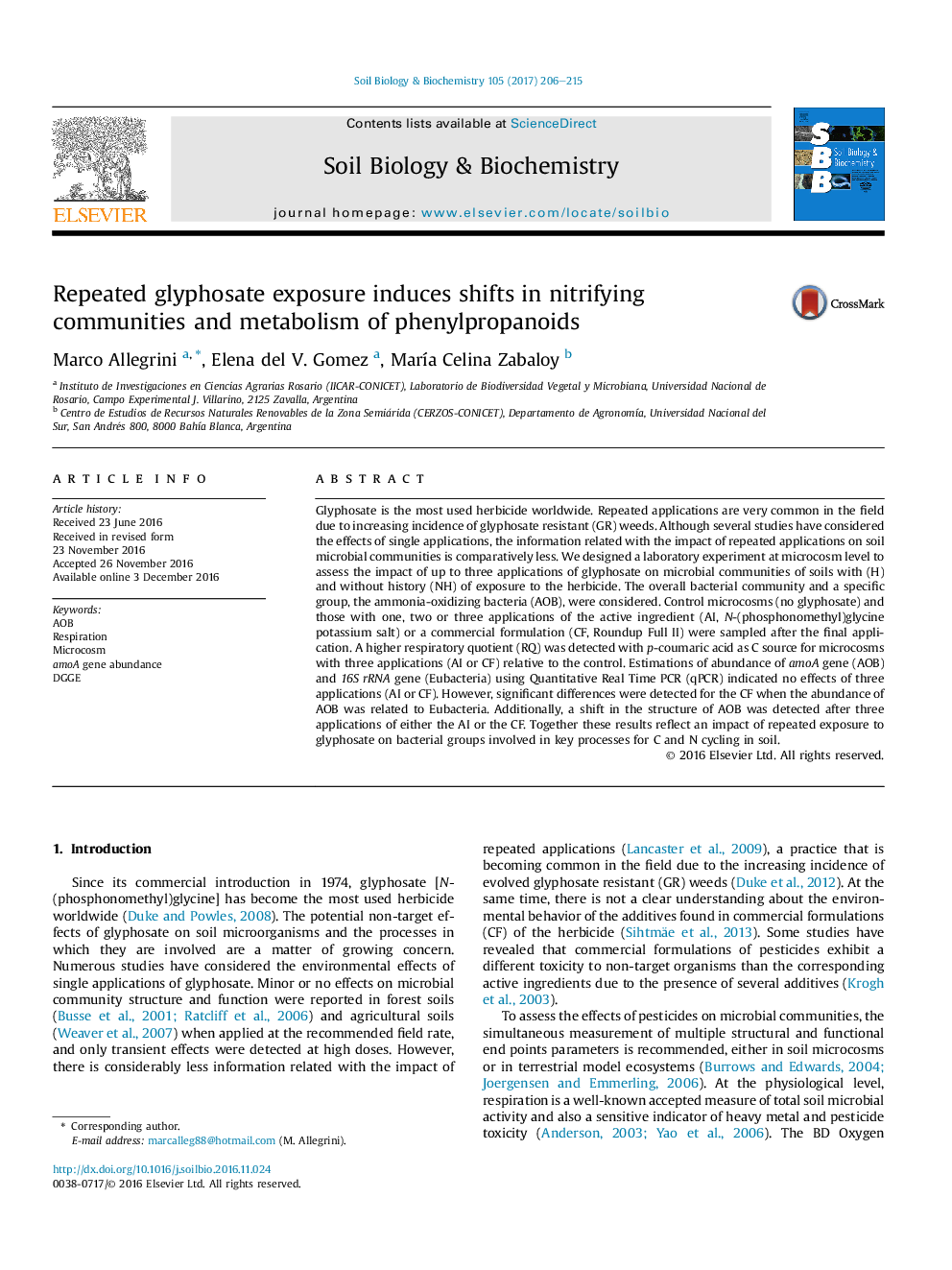| کد مقاله | کد نشریه | سال انتشار | مقاله انگلیسی | نسخه تمام متن |
|---|---|---|---|---|
| 5516516 | 1542579 | 2017 | 10 صفحه PDF | دانلود رایگان |
- The impact of repeated glyphosate applications on soil microbiota was considered.
- Respiratory quotient for coumaric acid was affected by repeated applications.
- Abundance of Eubacteria and AOB was not affected by glyphosate.
- Shifts in the abundance of AOB relative to Eubacteria were observed.
- DGGE profiles of AOB were different between control and treated microcosms.
Glyphosate is the most used herbicide worldwide. Repeated applications are very common in the field due to increasing incidence of glyphosate resistant (GR) weeds. Although several studies have considered the effects of single applications, the information related with the impact of repeated applications on soil microbial communities is comparatively less. We designed a laboratory experiment at microcosm level to assess the impact of up to three applications of glyphosate on microbial communities of soils with (H) and without history (NH) of exposure to the herbicide. The overall bacterial community and a specific group, the ammonia-oxidizing bacteria (AOB), were considered. Control microcosms (no glyphosate) and those with one, two or three applications of the active ingredient (AI, N-(phosphonomethyl)glycine potassium salt) or a commercial formulation (CF, Roundup Full II) were sampled after the final application. A higher respiratory quotient (RQ) was detected with p-coumaric acid as C source for microcosms with three applications (AI or CF) relative to the control. Estimations of abundance of amoA gene (AOB) and 16S rRNA gene (Eubacteria) using Quantitative Real Time PCR (qPCR) indicated no effects of three applications (AI or CF). However, significant differences were detected for the CF when the abundance of AOB was related to Eubacteria. Additionally, a shift in the structure of AOB was detected after three applications of either the AI or the CF. Together these results reflect an impact of repeated exposure to glyphosate on bacterial groups involved in key processes for C and N cycling in soil.
Journal: Soil Biology and Biochemistry - Volume 105, February 2017, Pages 206-215
